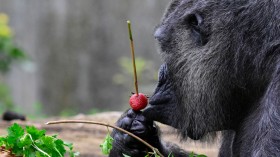A new analysis by the Environmental Defense Fund revealed that baby foods are more likely to contain detectable level of lead than normal foods.
The analysis showed that about 20 percent of over 2,000 baby food samples and 14 percent of more than 10,000 other food samples have detectable lead levels. Lead is a toxic substance that is present in the environment in small amounts. Humans can be exposed to lead through dust or dirt. Because lead can also be present in the soil, it can be absorbed by the plants we eat or contaminate drinking water.
"Lead can have a number of effects on children and it's especially harmful during critical windows of development," said Dr. Aparna Bole, a pediatrician at the University Hospitals Rainbow Babies and Children's Hospital in Cleveland and was not involved with the analysis, in a report from Salon. "The largest burden that we often think about is neurocognitive that can occur even at low levels of lead exposure."
For the study, the researchers analyzed the data collected through the Food and Drug Administration's Total Diet Study (TDS), which tracked metals, pesticides and nutrients in foods.
Out of the 2,164 baby food samples included in the study, 20 percent have detectable levels of lead. Among the baby food samples, lead was most commonly detected in fruit juices, root vegetables and cookies.
Surprisingly, the baby food version of apple and grape juice and carrots has higher detectable levels of lead compare to their regular counterparts. About 89 percent of the baby grape juice samples contained detectable lead levels, 55 percent in apples and 43 percent in carrots.
There is still no known identified safe blood lead level. However, FDA has set specific lead levels for variety of foods. Candies and dried fruits should not exceed 100 parts per billion (ppb) of lead. On the other hand, bottled water and fruit juices should not go over 5ppb and 50 ppb, respectively.
© 2024 NatureWorldNews.com All rights reserved. Do not reproduce without permission.

![Great White Sharks Observed for the First Time Changing Their Behavior in Different Marine Environments [Study]](https://1471793142.rsc.cdn77.org/data/thumbs/full/70251/280/157/50/40/great-white-sharks-observed-for-the-first-time-changing-their-behavior-in-different-marine-environments-study.jpg)
![Origin of Life: Discovery of Lava Being a Building Block of Life Hints 'Humans Have Volcanic Origins' [Study]](https://1471793142.rsc.cdn77.org/data/thumbs/full/70262/280/157/50/40/origin-of-life-discovery-of-lava-being-a-building-block-of-life-hints-humans-have-volcanic-origins-study.jpg)


